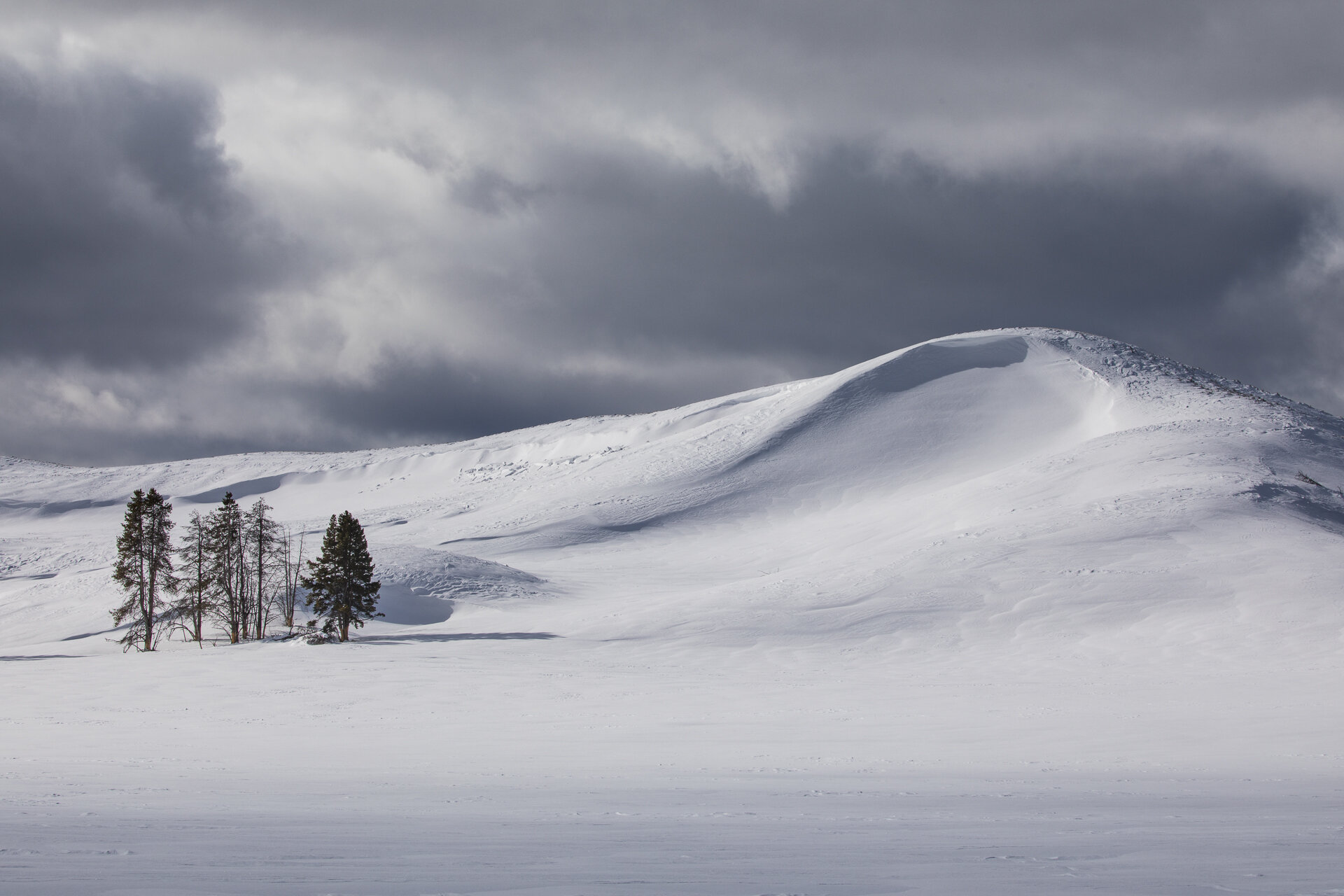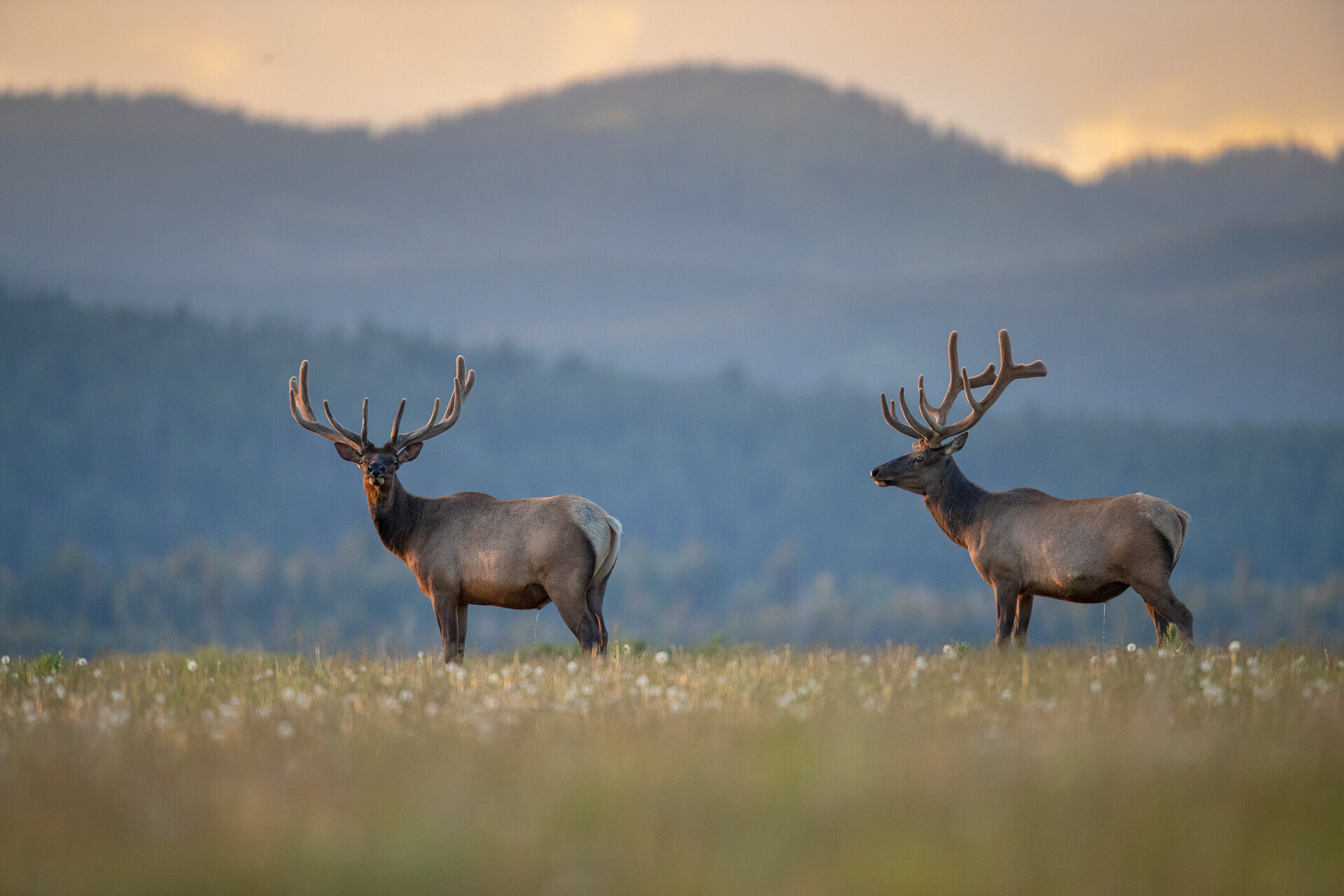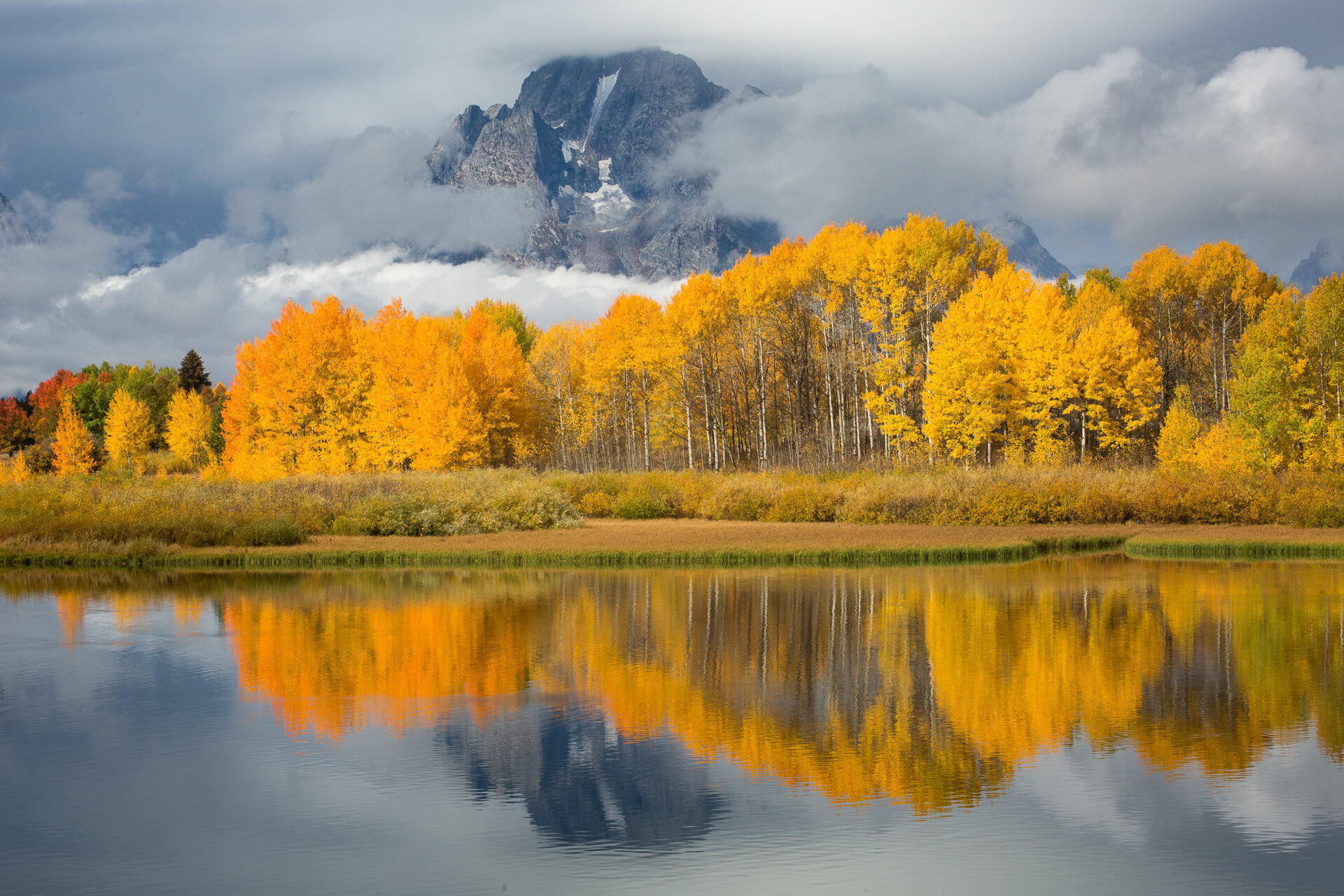
Yellowstone in Seasons
the best time of year to photograph Yellowstone? ANy Time.
Every Season is unique.
We are often asked what is best time of year to photograph the Yellowstone ecosystem. The truth is that every season offers unique photography opportunities. Spring, summer, fall, and winter are all worth a trip. We’ve put together a collection of photos from our tours in each season.
spring
As the great spring thaw begins, the thick layers of ice that cover the lakes begin to retreat. Different patterns and lines form every day and provide unique opportunities for landscape photography. Yellowstone Lake, pictured here, claims over 140 miles of shoreline and holds ice on its surface over half of the year.
Perhaps the most anticipated event of spring is the first grizzly bear sighting. By mid-April we start to see bears more consistently. In hibernation bears rely entirely on fat reserves, and in 5 or 6 months of laying around, they lose virtually no muscle mass.
One of the first signs of spring is the return mountain bluebird. These spring migrants begin showing up in March and can often be found along pools of snow melt and photographed against a snowy white backdrop.
Harlequin ducks thrive in turbulent waters. Every spring Harlequins leave the rough surf of the Pacific Northwest and migrate inland to rapids in Yellowstone National Park. It's considered the southernmost breeding location for these resilient ducks.
In May, male Dusky Grouse put on a strutting display to attract a mate. Photographing these birds as they perform is incredible, especially when they pick a stunning stage for their performance as this male did.
Photographing a bison calf's first few days of life is a special experience . The so called "red dogs" are overflowing with energy, frequently sprinting and leaping into the air for no apparent reason other than for the joy of being of alive.
Summer
By early summer young fox kits are spending more time outside the den. Photographing these curious canines as they explore and learn to hunt is about as entertaining as it gets.
In early summer over 150 birds species are nesting in the Yellowstone ecosystem. It's around now that Great Grey owls chicks fledge and embark on their adorably clumsy journey of learning to fly.
A highlight of summer is bear cubs. We get to photograph them as they are learning invaluable lessons from mom. It’s an education that can last two or three years before they part ways to live on their own.
During summer months, bull elk can be photographed together in bachelor herds. Thanks to the nutritious grazing opportunities summer provides, their antlers, covered in velvet, begin regrowing up to an inch per day.
Wild fires are a natural part of the ecosystem. The upside for photography is that smokey skies also create dreamy light with a soft orange glow. Yellowstone's geysers are always interesting to photograph, but in late summer against the hazy skies they really pop.
August hosts the annual bison rut. Photographing these 2,000 pound beasts face off in a cloud of dust is an adrenaline rush. Periodically the bulls will wallow in the dirt marking their scent and then shake the dirt off their back.
Fall
The fall colors peak in late September / early October. The aspen and cottonwood trees in Grand Teton National Park put on a spectacular show this time of year.
In September bears are on a mission to fatten up before hibernation, and the ripe berry crops are a favorite meal. Both grizzly and black bears can photographed climbing around in the colorful berry bushes.
From a wildlife perspective, the elk rut is the defining photography event of the fall. The prehistoric sound of elk bugling fills the air, and the bulls are competing to gather groupings of females.
As the first snow falls, many birds begin their migration. Great grey owls depart from their summer homes and head south. They become more visible in certain areas as they make that journey.
Late fall is the best time of year to photograph moose. Moose can be elusive for the majority of summer as they seek to avoid the heat by hiding out in the river bottoms. In the fall they spend time in the open amongst the sagebrush flats.
By November the lakes begin to freeze over. The remaining waterfowl congregate in what little open water is left. This creates prime hunting conditions for bald eagles to ambush ducks.
Winter

Photographing Yellowstone bison covered in frost is a dream. Since they are so well insulated with their winter coats hardly any body heat escapes and ice accumulates on their body.

Catching a glimpse of an ermine in the winter is always a treat. Their coat turns from brown to white each winter, allowing them to be nearly invisible as they move through a snow white landscape

Winter is the season of the wolf. Wolves can be photographed throughout the year, but winter provides the best opportunities by far as they are following prey that is congregated in lower elevations.

There are few things more visually striking than a red fox against the white snow. In the winter red fox will listen carefully for movement under the snow before leaping into the air and diving head first into the snow.⠀⠀⠀⠀⠀⠀⠀⠀⠀

By January, Yellowstone's interior is a sea of white. The wind carves formation in the snow, and the landscape is filled with a deafening silence.

Winter is the best of time year to photograph river otters. They can be found fishing underneath the ice shelves, and taking lengthy breaks to play in the snow.



















